This was a pretty huge day. The island, small as it is, seems to call for huge days.
I rose early and rented a bike in town, from Insular on the main street. I was impressed with how professionally this place was run, and ended up with a Cannondale bike for 24 hours, a helmet and a lock for CP$10,000 (about $20).
I want to see as much of the island as I can by my own volition: by foot or on bike. It’s only 69 square miles, which is 12 percent smaller than the City of Cleveland, so I feel like it’s reasonable to expect I can do this. Also, especially for my first full day on the island, I didn’t want anyone talking at me, telling me what they thought or what I should think. Matias has been nice enough to offer to drive me places, and I’m sure I’ll take him up on that at some point. But for my first full day here, I wanted to have my own experience.
By the time I got on the road, it was about 9 a.m. I’d gotten a lot of sleep the night before and felt energetic. Once I left the outskirts of Hanga Roa, development tapered off quickly and the roads emptied. This was nice, as I find Hanga Roa to be a rather depressing place.
My plan was to take the main road from Hanga Roa to Anakena at the West (opposite) end of the island, and then the south coastal road back, for a round trip of about 45 km, or 25 miles. I’d heard from a couple of people that it’s best to go to Anakena first because Anakena to Hanga Roa involves steeper uphill climbing. This direction also has the added benefit of seeing the island in the opposite direction of most tourists — they do the south road first, and then calle principal — so that I’d miss the crowds.
As soon as I got out of town, I saw a side road for Vinapu, the site of two ahu, and I couldn’t help but turn off. I got a bit lost trying to find the site down some red-dirt roads, but when I did, I was the only soul in view.
This was a magical place. The moai remain toppled and unrestored, and the site is best known for the excellence of the ahu masonry, which is reminiscent of that seen at Machu Picchu. The consensus seems to be that the islanders developed this skill independently from the Inca, though some people think early visitors from the South American mainland may have influenced construction.
Also here is the only moai made out of red scoria — the volcanic rock that the moai topknots were later made from. (99 percent of moai are made from tuff, a soft volcanic rock that’s fairly easy to carve.) Because this scoria moai has rather large breasts (not really visible in the photo below), the theory is that it is a female moai. Depictions by early European explorers show the statue as having once had two heads, now long gone.
Seeing the broken moai face down along the ahu, I again tuned into a sense of profound… disappointment. The sight of these enormous and finely crafted objects pushed over, eating dirt, is one of the most powerful images of disillusionment I’ve ever seen. You didn’t save us, is what I heard. Maybe I’m being melodramatic, and the toppling of the statues really was just intertribal war, as most archaeologists say. But for me, it’s hard not to see something more complex.
Here they are, lying face down. This is what all the ahus looked like from about 1838 until a few started being restored in the 1950s.
A disembodied moai head, buried in the grass behind the ahu:
From here I biked the main road all the way to Anakena, which took about an hour. This was pretty hard work — rolling hills but overall a constant uphill climb for about 30 kilometers. The last few kilometers are straight downhill, and I saw why people recommend not doing this ride the other way around.
I kept trying to get a photo of the vastness I felt on this tiny island, on this empty road, with thousands of miles of uninterrupted ocean on all sides. Of course that’s impossible but maybe these collectively give a flavor:
These stone piles, called Pipi Horeko, are all over the island. They’re thought to be ancient tribal boundary markers.
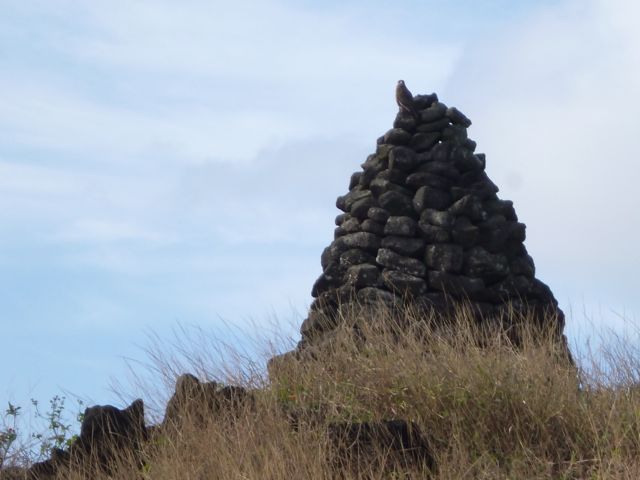
Anakena is basically a pleasant beach that happens to have some moai in front. It’s beautiful, as is every place on the island, but seemed less powerful to me than the other sites I’d seen so far. Maybe because this part of the ocean, a gentle bay with white sand, seems to require less protecting from. And the moai themselves, which have been restored, are correspondingly diminutive. The presence of picnic tables, snack stands (closed when I was there) and a few sunbathers probably also undermined some sense of mystery.
These moai are famous for the details still visible in their hands and in the carvings on their back (preserved because the statues were buried in sand when they were toppled). I love the delicacy of their fingers compared with how robust everything else about them appears. Most of these moai also sport red-scoria topknots, which started being added late in the moai-carving period.
Details on their backs, showing their “clothes”:
An older moai head has been used as part of the building material of the ahu (platform), and you can also see some a petroglyph of a… hmmm. Maybe a monkey?
Next to the dominant ahu, there’s another supporting a single moai, Ahu Ature Huki. I actually liked this guy a lot more than the superstars next door. He was the first moai to be stood upright, in 1956, and has a melancholy, beseeching expression on his face, his lips appearing downturned and his eyes wide, tentatively hopeful.
I rode out of the site and pedaled about a kilometer away, to Ovahe, a tiny, beautiful, and mostly unvisited beach. Sitting here alone, with the expanse of the Pacific before me, I felt the closest I’ve ever been to being on a deserted island. Do I really get to be here alone? I wondered. Apparently, yes, and I stayed for a full half hour or so. I even got in the water — just deep enough and long enough to immerse myself completely. I felt like I needed to. The waves were gentle, but the water was a bit uncomfortable: chilly and full of stew of seaweed pieces.
Randomly, a bleached bone on one of the rocks. Not the first chilling sight I’d see on the island.
After Ovahe, the road becomes unpaved as it branches off toward the island’s east coast. Along here, there are seemingly dozens of unrestored ahu. I looked for the one that supported the largest moai ever erected, Paro, but I was disappointed not to be able to find it. The price to be paid, I guess for guiding myself.
I also passed what’s known as one of the best petroglyph sites on the island, Papa Kava. The islanders liked to make their petroglyphs on smooth rock embedded in the earth. The photos didn’t come out that well, but when you’re actually there you can see many fish and the long fishing ships that the islanders used.
After this, the road turns back inland, skirting the edge of the Poike Peninsula on the left. The red, Martian-looking Poike is an inactive volcano (all volcanoes on the island are extinct, with the last having erupted 30,000 years ago), and one of the most obscure parts of the island. Its main claim to fame is that supposedly there was a Virgins’ Cave here, where young women were kept to keep their skin pale.
These few kilometers past Poike are a long slog of a climb, and I was hitting the island’s most punishing hours of sunlight: From about 1 p.m. to 3:30 p.m. (The volcano you see below is actually the one after Poike — Rano Haraku, where the moai quarry was.)

But what a reward at the end when, after about half an hour of drudgery, I arrived at Ahu Tongariki. Seeing the restored platform from a distance gave me chills. (That’s it on the left.)
It has 15 restored, monumental-size moai — the largest platform on the island. The restoration was paid for by the Japanese government, for reasons I don’t really understand, though there seem to be close ties between Japan and Easter Island. Japanese are the second-most prominent tourist nationality that I noticed here, after Chileans.
The moai here seemed to me to have different expressions: some with wider mouths, giving them a sort of grim, practical look. Others with upturned lips that look obstinate, almost pouty. One, probably due to erosion more than design, looks extremely old, his upper lip sagging and wrinkled. I thought of him as the Old Man Moai.
And speaking of erosion, I wonder: Given how much the faces have deteriorated in a few hundred years, how much longer can the moai last against the forces of the Pacific? Another couple of hundred years before their features are wiped away completely? Another thousand before they’re reduced to shapeless pillars? Realizing the impermanence of even these mammoth structures made my head spin. 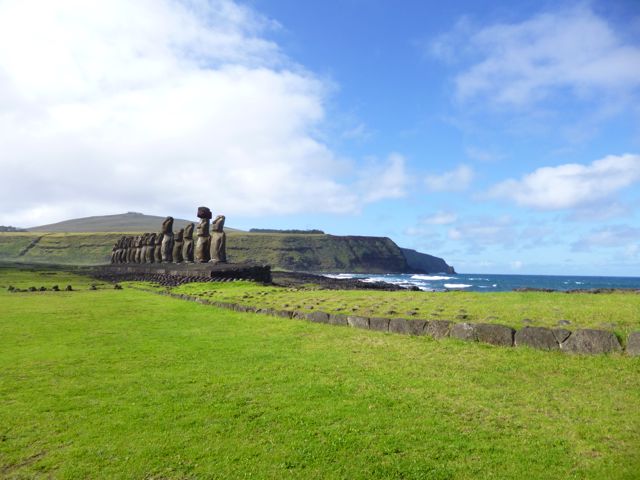

These moai look directly at Rano Haraku, the volcanic quarry at which they were carved:
Behind the platform are moai fragments salvaged during reconstruction. I lay for a while on some rocks on the shore and looked at the volcanic vista, seeing it from the statues’ point of view.
I cycled on, toward the volcano.
The front of Rano Haraku came into view. This is perhaps the most famous point on the island — doubtless you’ve seen photos. And yet it looked 10,000 times more magical than anything I’d ever seen on television or in magazines. Dozens of moai in the distance, seeming to grow out of the sloped earth. The sunlight was soft and yellow by now, too, and mottled through the clouds. It reminded me of Scotland, but with an added air of mystery.
I road up to the site, gawking the whole way. When I got to the entrance, I was ravenous, and ordered an obscenely overpriced empanada from the snack stand. It was chicken (it was that or beef) with a million onions. I picked out as many onions as I could and gave them to a dog who’d been watching me patiently. He wolfed them down.
And then I entered what might be the most remarkable place I’ve ever been. I’ll never forget it. The heads and shoulders of moai rising at every angle from the grass, where they were abandoned 500 or 600 years before, never to arrive at an ahu. There are more than I’d ever imagined — maybe 50, or more? — and yet the place also felt somehow intimate. You can walk up to these faces, study them.
One of the moai is kneeling. In fact, he’s the only found in this position. Theories are that he was a prototype for a new type of statue that didn’t catch on, or maybe an entrance marker to the quarry. In the background, at the coast, you can see Tongariki clearly in person, less so in the second photo below.
To my untrained eye, many of the moai seemed to date from the same period. They had the same features, the same facial details. I started to get a picture of a frenzy as the island’s resources diminished. A last-ditch effort to be the last tribe to use the island’s final timbers, maybe, to move the moai to their tribal ahu? An attempt to appease the gods by ramping up production, so that new trees and farmland might miraculously be delivered?
I could also picture the carvers slaving away in the unrelenting sun. Even for a people who must have been well-adapted to such conditions, the light and the heat as they worked must have been brutal. Maybe deadly. Here’s a moai still embedded in the rock from which he was being carved:
Also here is the largest moai ever carved, El Gigante. Unfortunately, the photos of him didn’t come out.
One of the moai has a European ship carved on his chest — probably chiseled there after one of the early white explorers arrived. I sat in front of this moai, thinking of the confusion the islanders must have felt at being “found.” Again: The realization that the moai hadn’t protected them after all. Deadly strangers had come.
I sat down as closing time (6 p.m.) approached and the site began to clear out. I felt overwhelmed being here. The magnitude of ancient human emotion on display. And also, just the knowledge, again, that I was here. On Easter Island.
The dog I fed my onions came trotting into view and sniffed up to me. I know he was just hungry, and saw me as an easy target, but something about the sight of him, and his need, and being surrounded by ancient memories of desperation and need, pushed me over the edge. I got teary and then started to all-out bawl, hoping no one was around to see or hear. (They weren’t, I don’t think.) Feeling foolish, I stood up and walked some more, and the dog followed me for a while with his big sloppy gait. I pulled myself together and told him I couldn’t help him because I didn’t live here, and he should go home. He didn’t listen at first, but eventually he galloped down the path away from me, looking back only once.
I was the last person to leave. I didn’t even have time to see the crater lake nearby where there are more moai remains. I just couldn’t tear myself away from the quarry. (Word to the wise: If you love the moai, like me, plan to spend at least 4 hours at this site. You can only visit it once each time you go to the island.) As I wheeled my bike out the gate, the ranger who checked me in and her coworker were getting ready to drive off in their truck. They smiled and offered me a ride back to town. “You were the last one here,” they said. I nodded. They seemed to respect me for that. I hesitated for a split second — wait, I was supposed to finish my biking circuit, right? — and then said to hell with it. I tossed my bike in their truck bed and hopped in the back.
Their names were Graciela and Francisco, both Rapanui. We chatted the whole way back — the whole long way back, about 20 minutes by car — about the island. Graciela pointed excitedly to all the ahu we passed on the southern coast road. I was amazed that after all this time and all these tourists, she was still excited to show me the ahu. We talked, in a mix of Spanish and English, about the increasing number of tourists on the island, and how their coming was good in a way, because most people on the island support themselves by tourism. And yet they were also bringing with them mas basura (more trash), changing the island’s laid-back culture.
They asked where I was from, what I did. I felt so happy to be with them, two people who were so effortlessly friendly. An antidote to the sense of the unknown I’d felt in the quarry. They dropped me off at the edge of town and I walked to my cabana (had I ever really cared about it being slovenly?) and then out to Tahai to watch the sunset.
I’m going to try to watch the sunset at Tahai every night I’m here. And tonight it was endless and spectacular: Mostly clear, no rain. Thin pink clouds drained into horizon, following the sun. I stayed until the first few stars came out and then stumbled home in the dark.


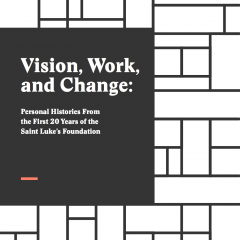


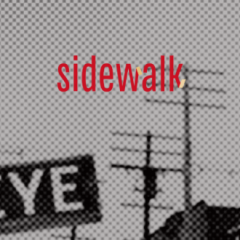




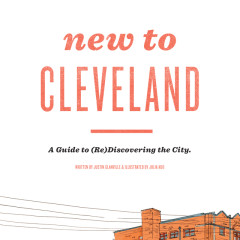

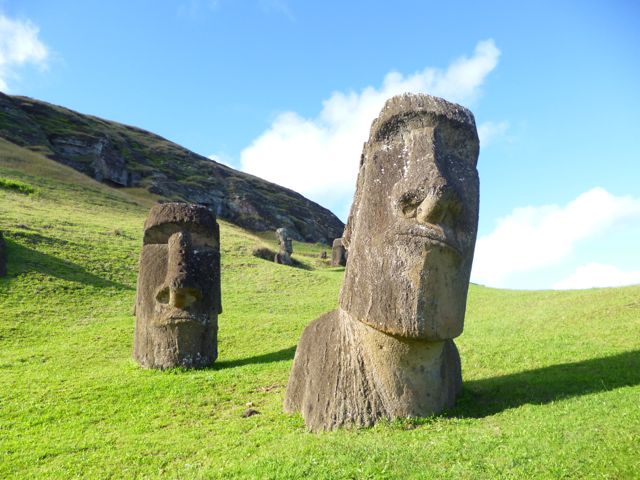
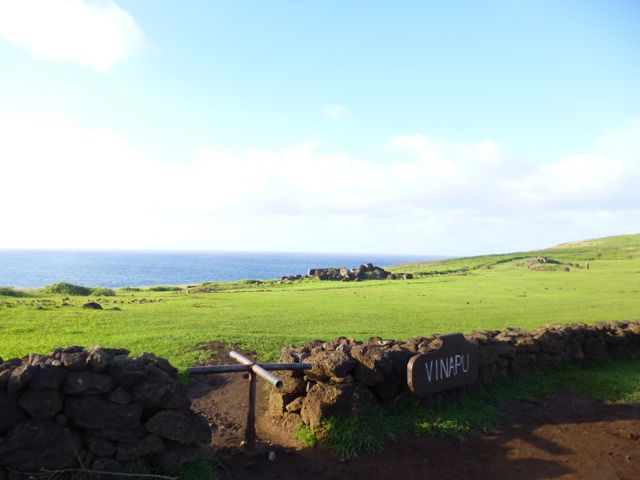
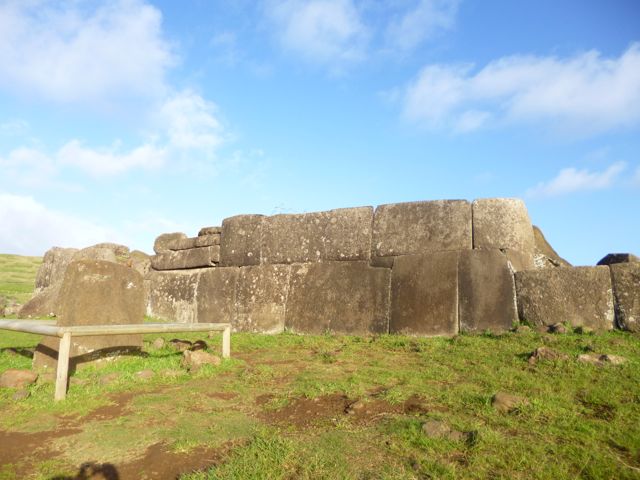

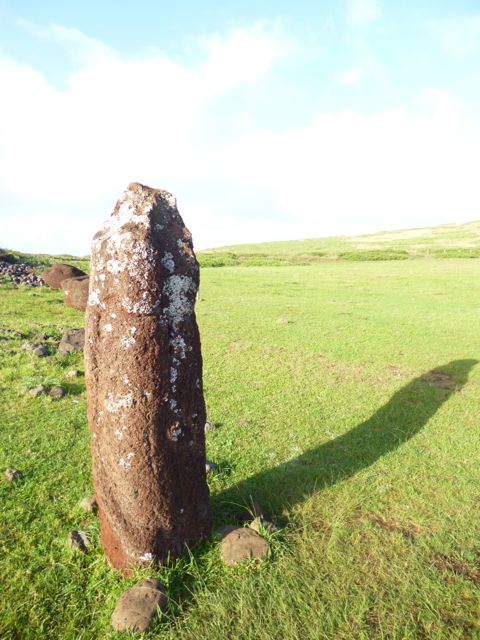
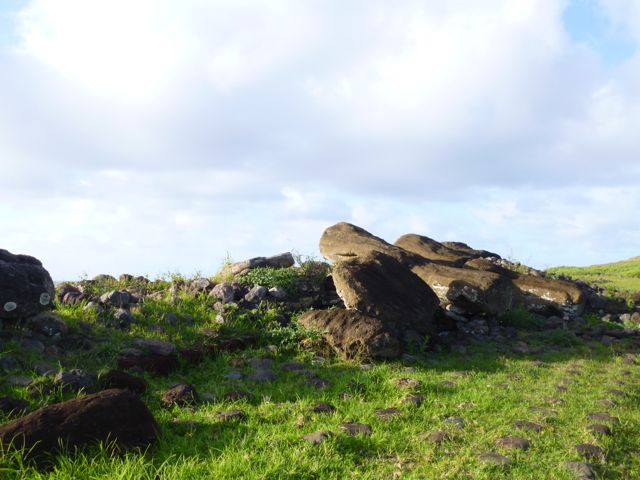
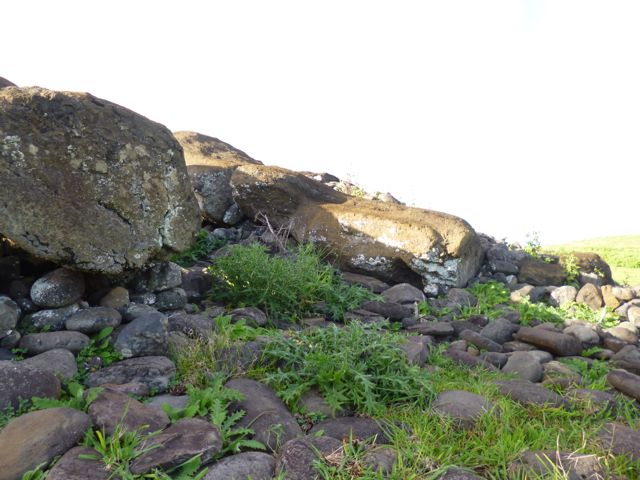
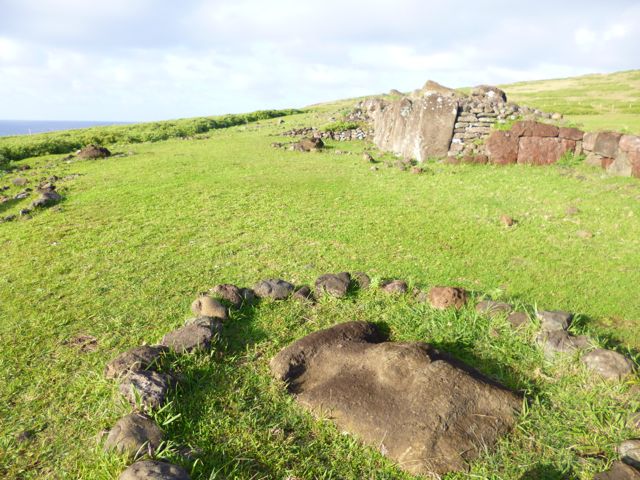

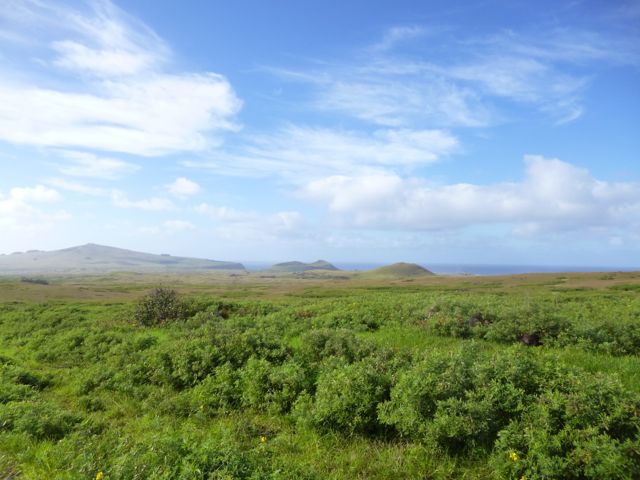
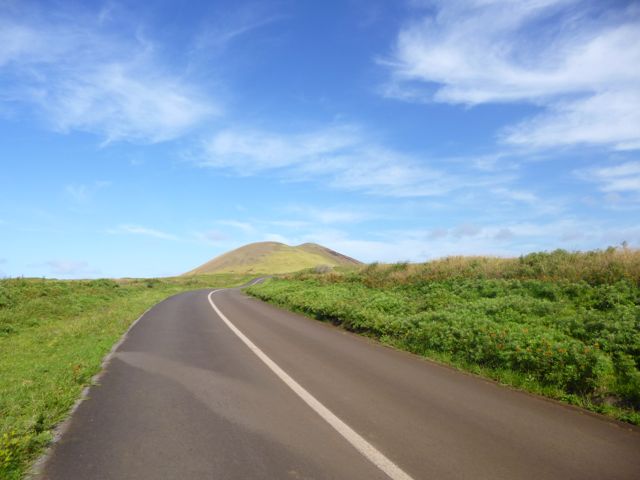

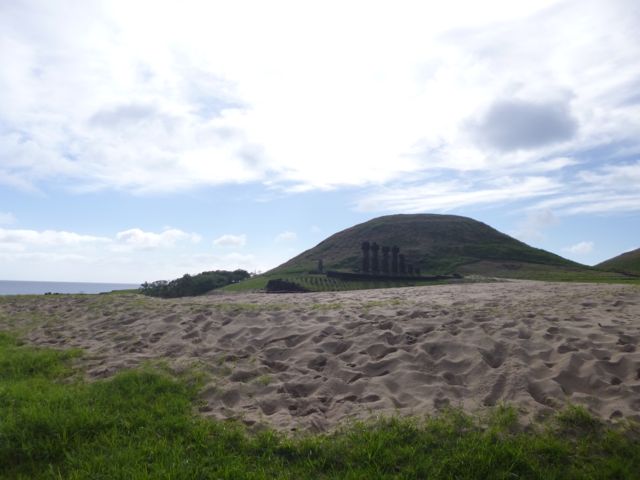
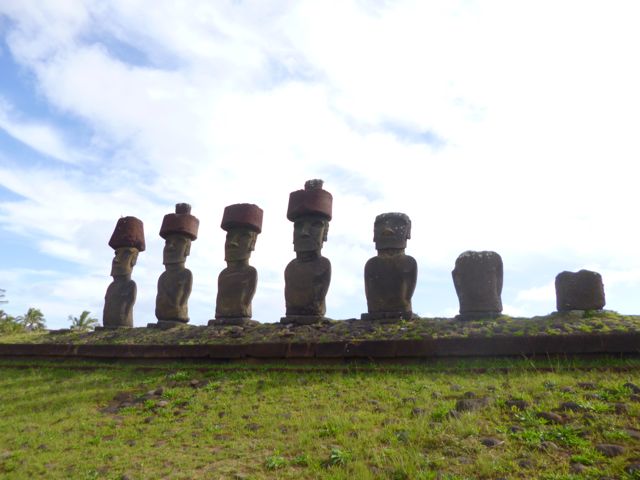
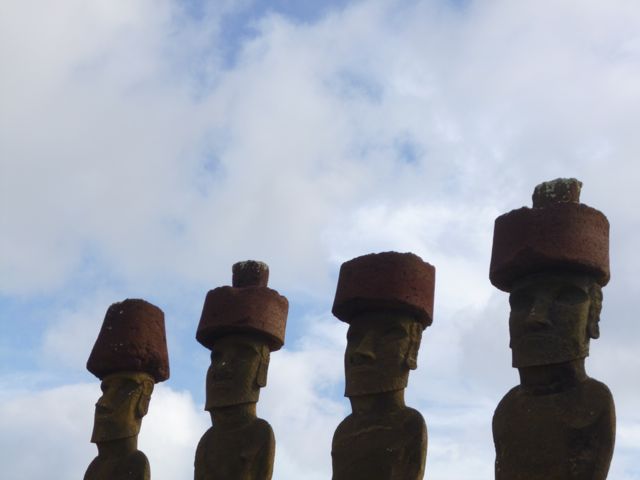

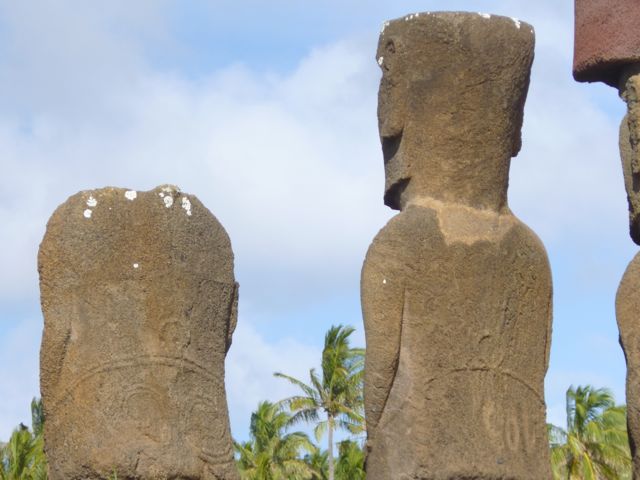
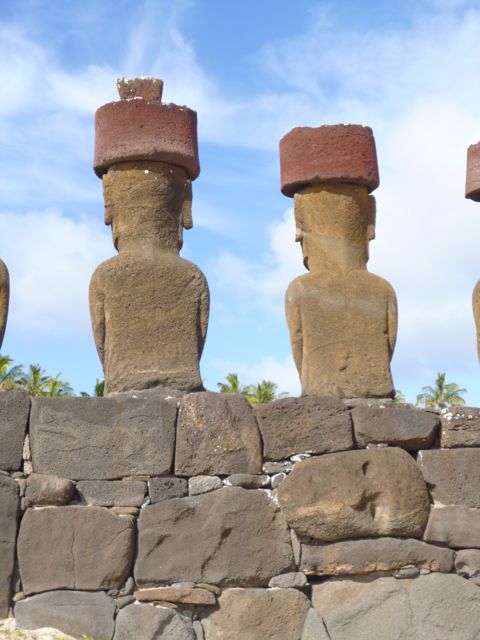
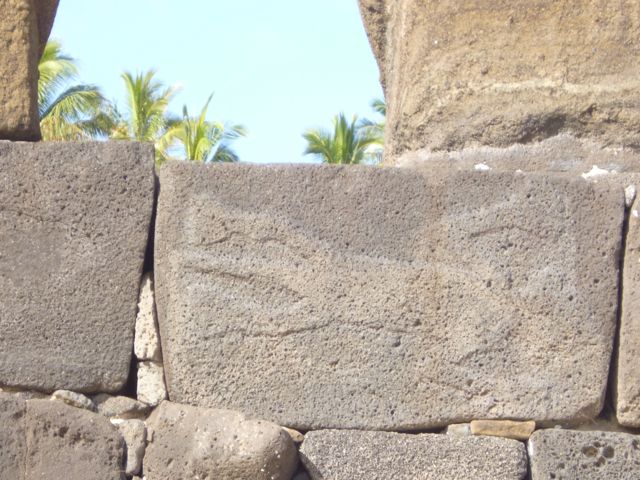

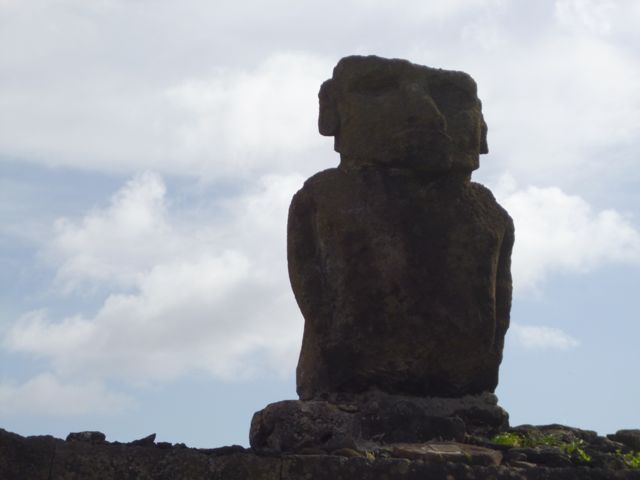

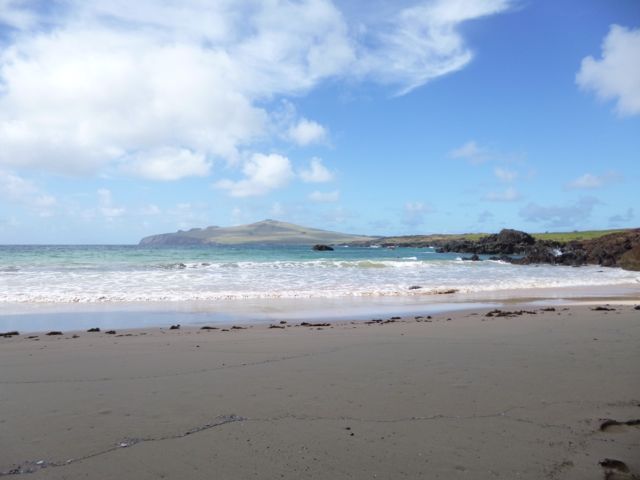

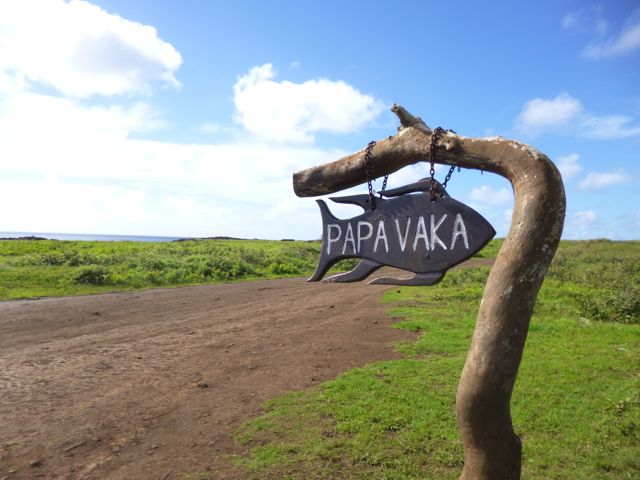
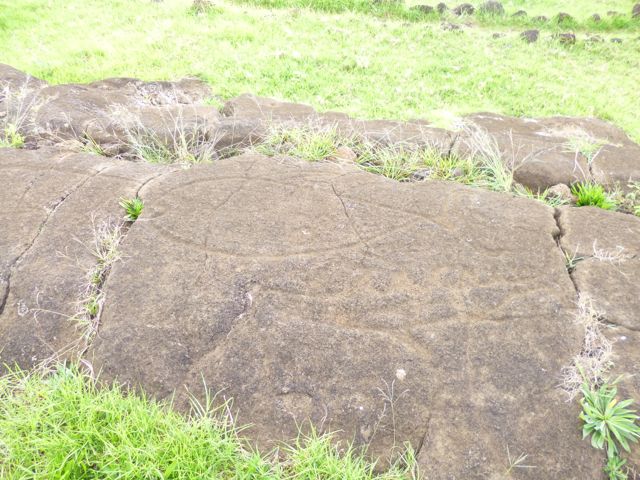
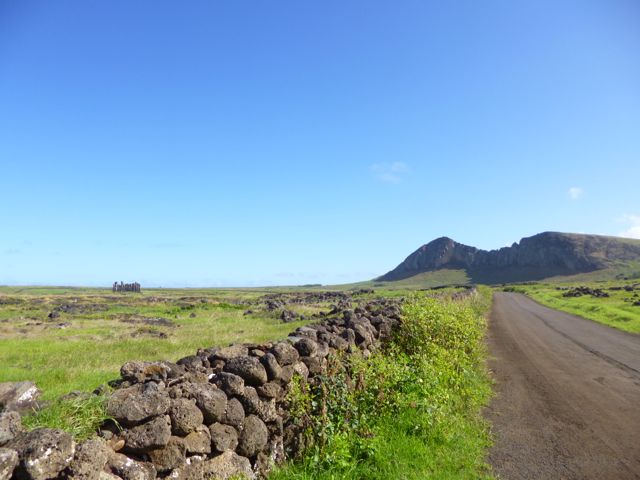
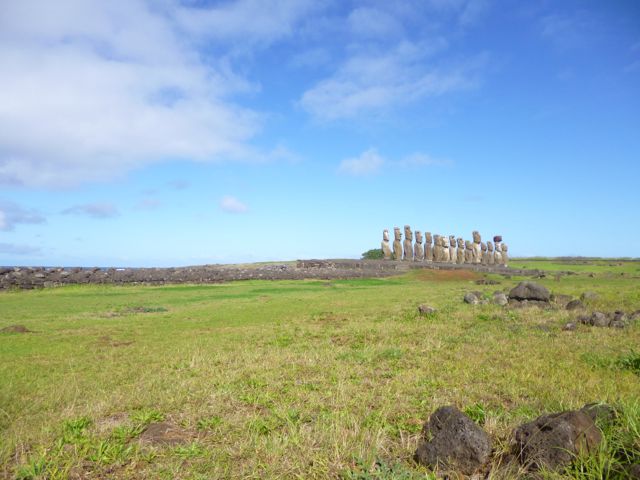
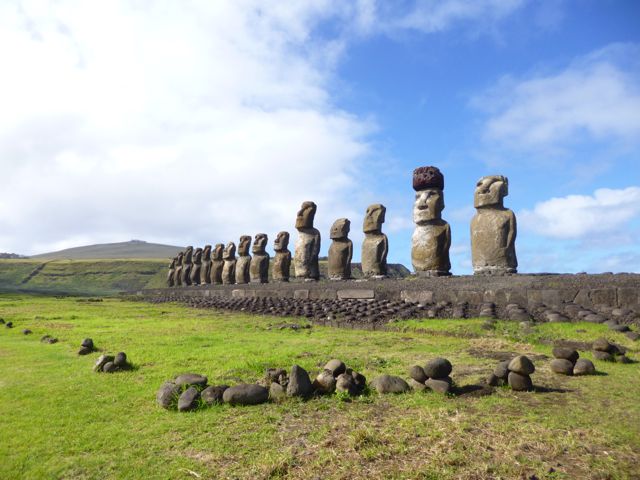
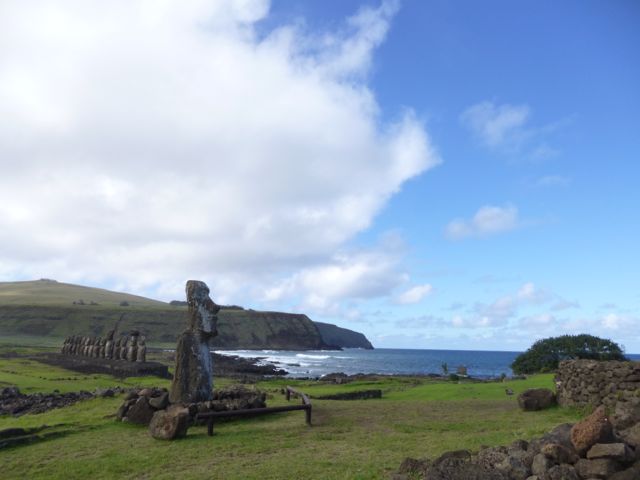
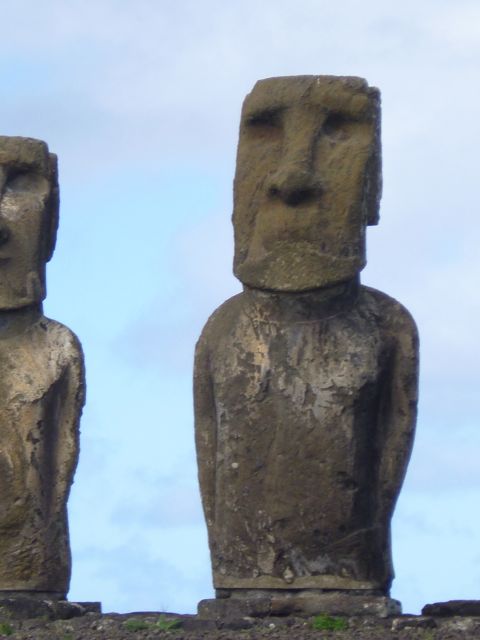
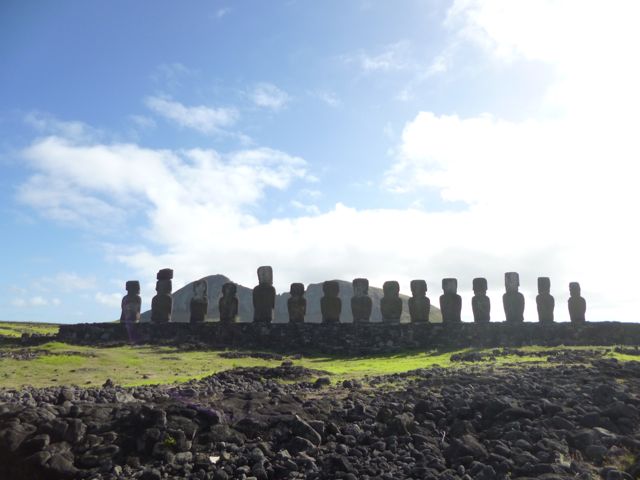
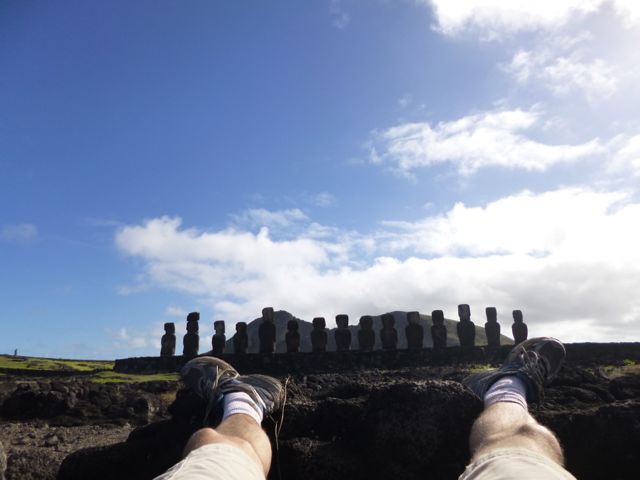
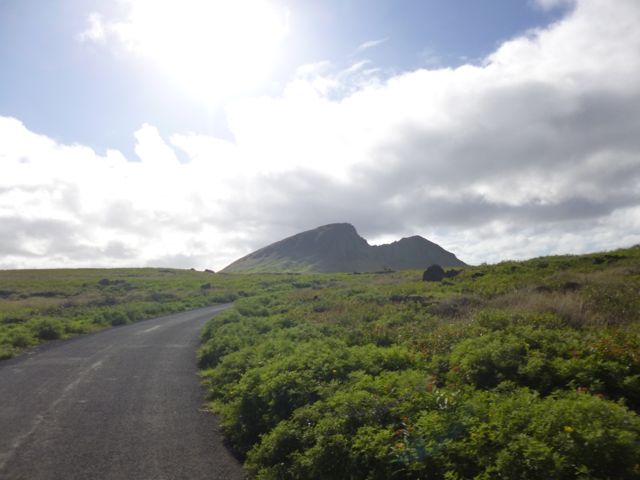
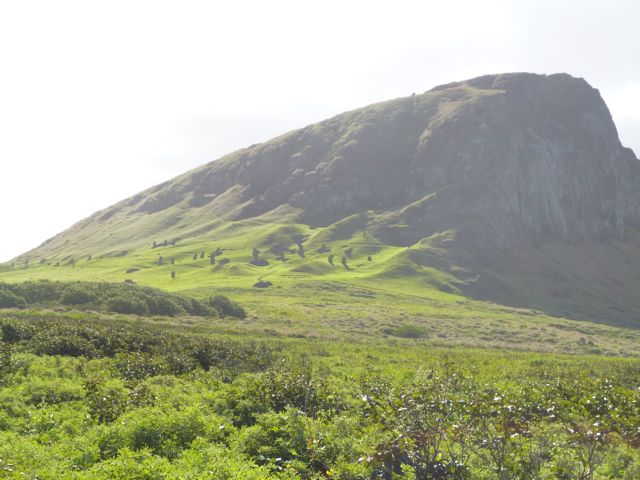


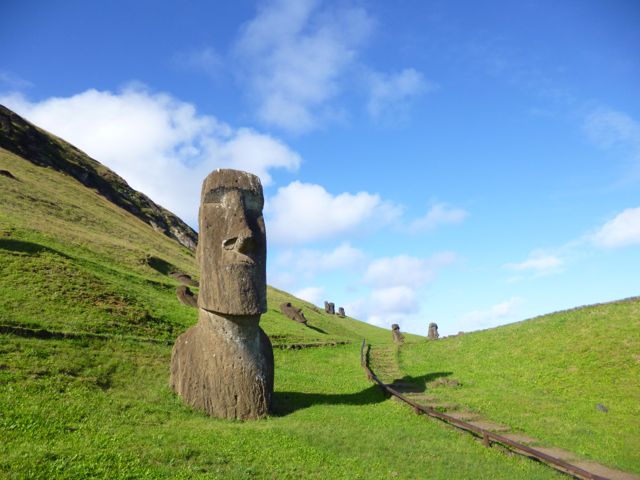

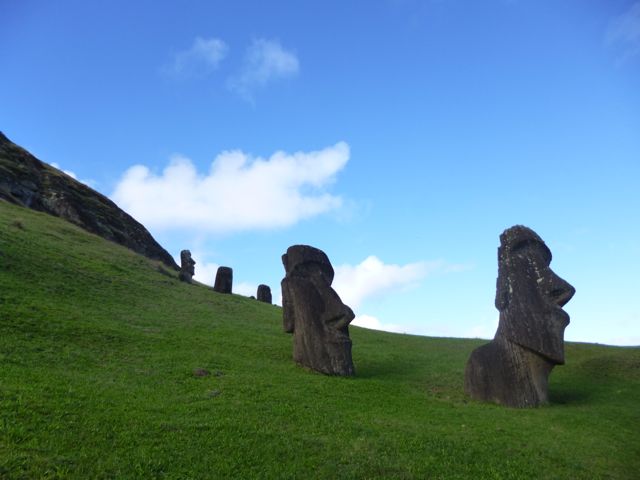
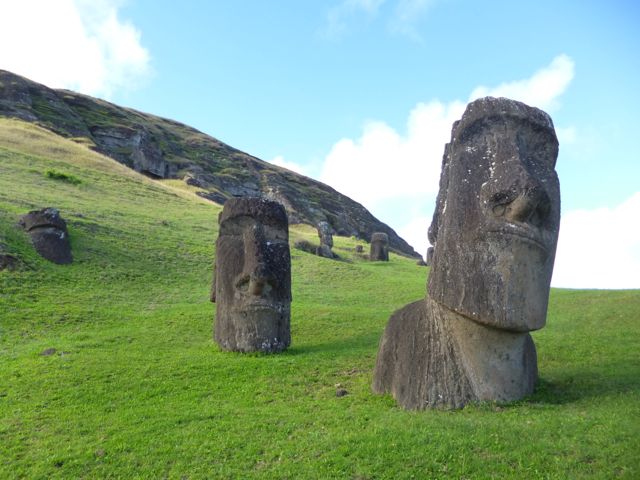

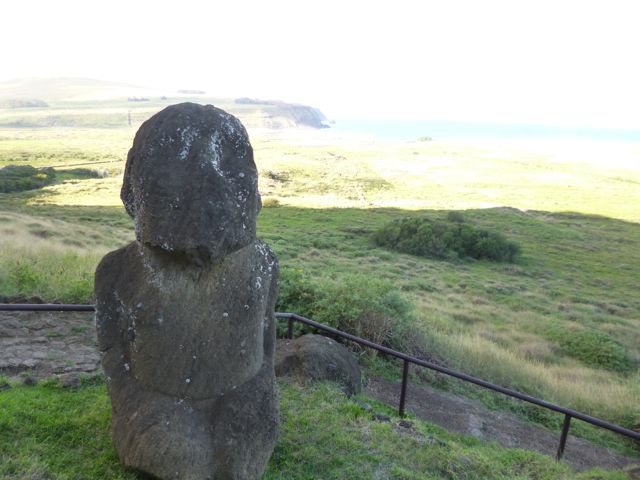
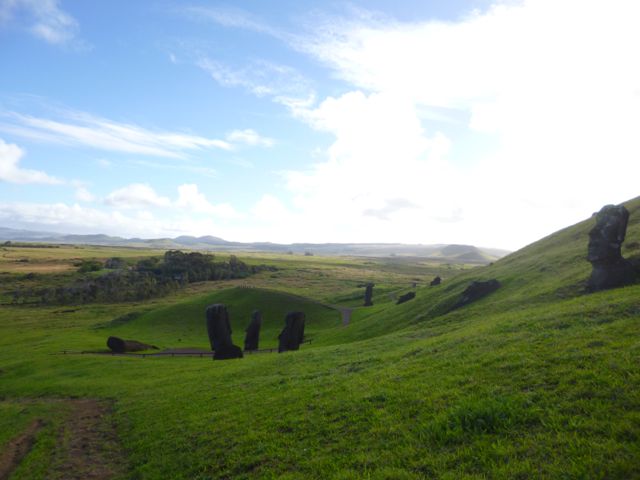

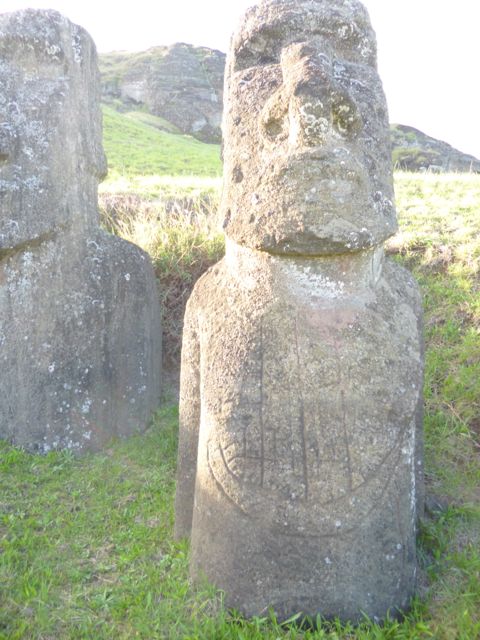
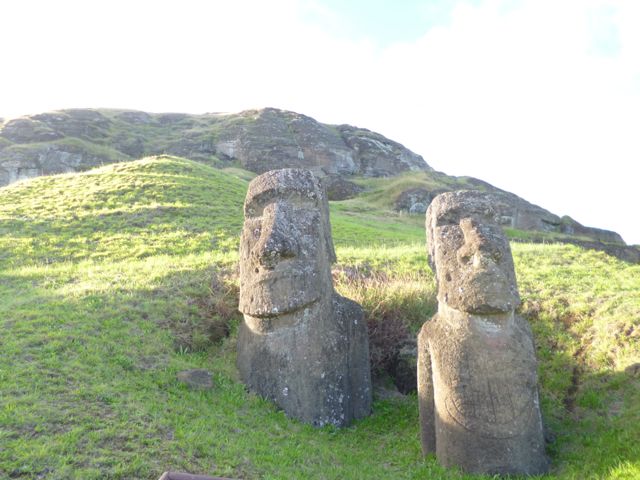
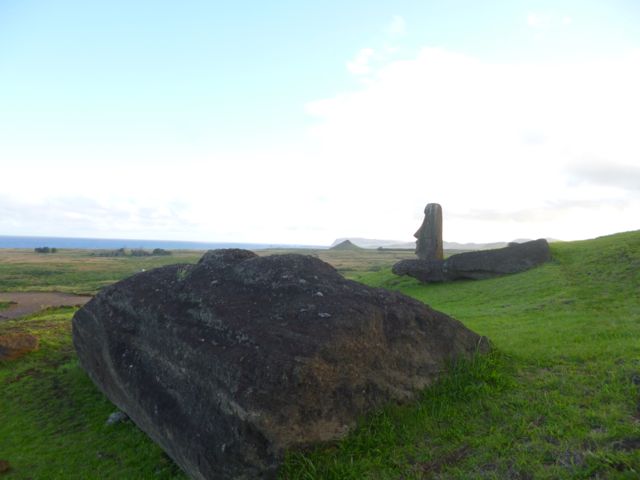
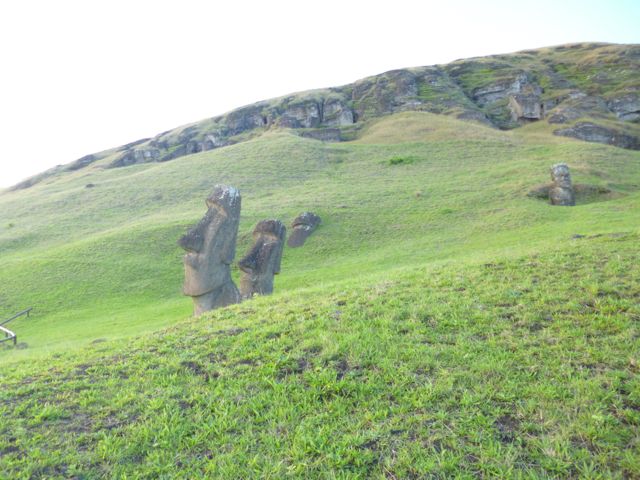
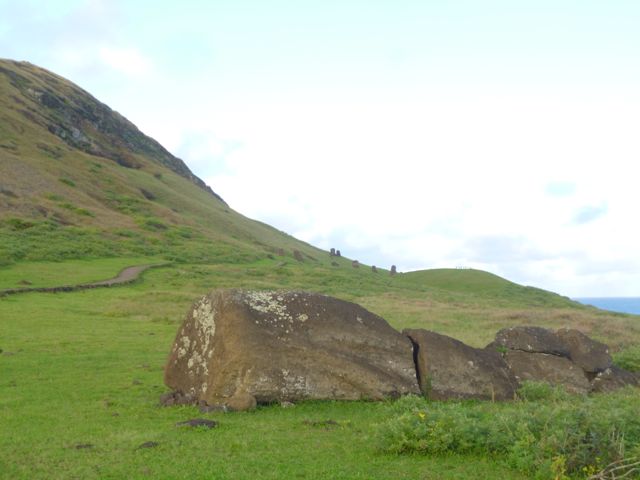
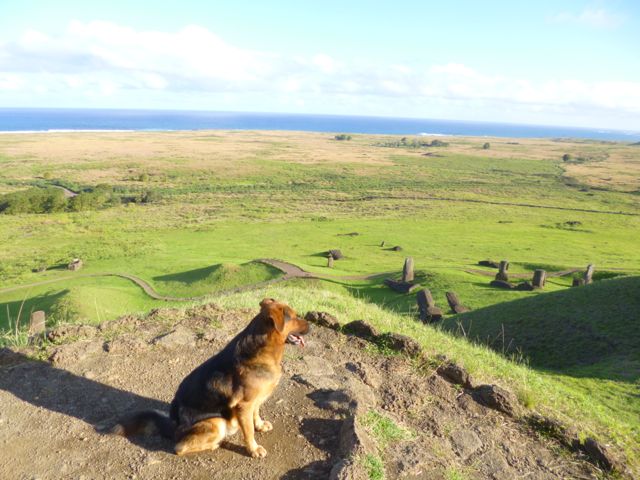

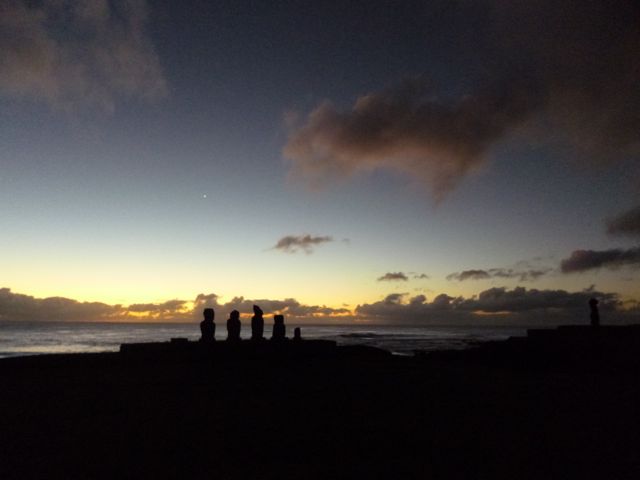
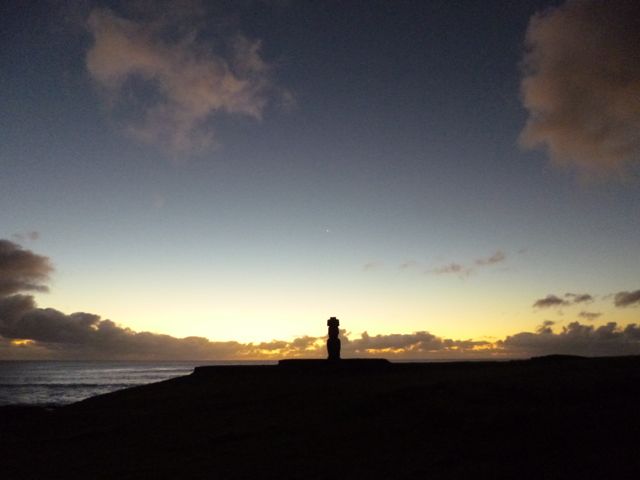
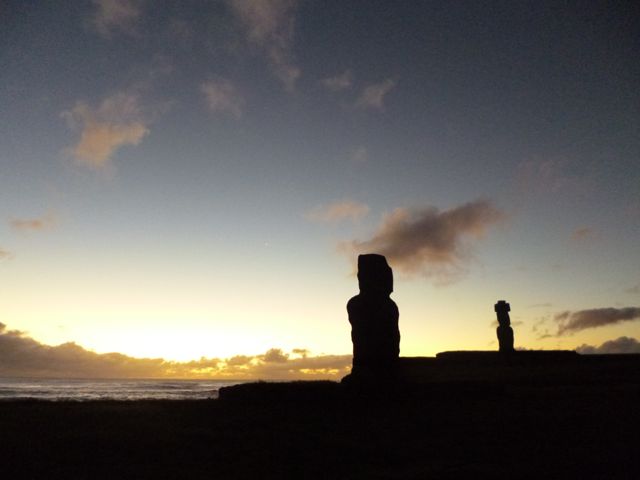
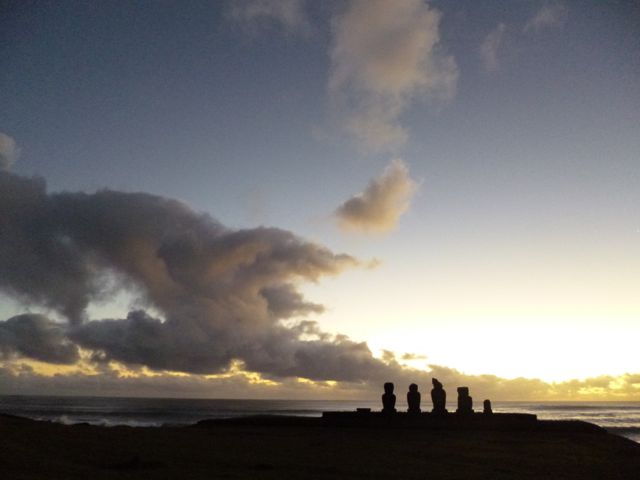

2 Comments